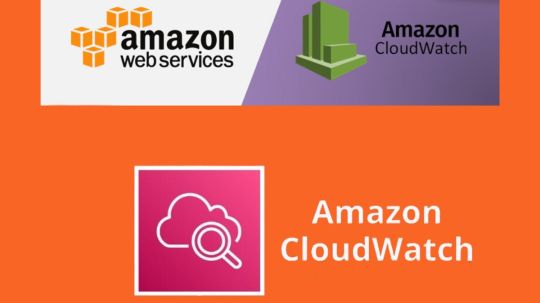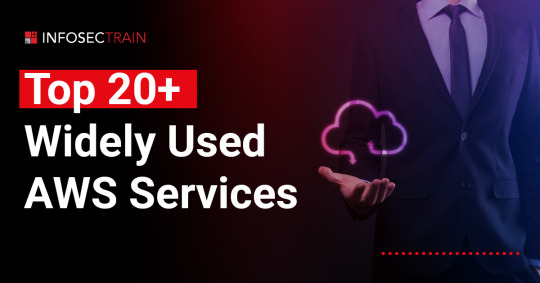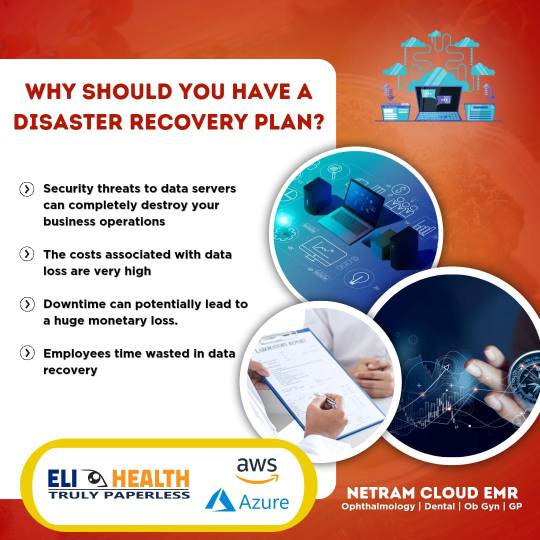#AWSservice
Explore tagged Tumblr posts
Text
Amazon CloudWatch: The Solution For Real-Time Monitoring

What is Amazon CloudWatch?
Amazon CloudWatch allows you to monitor your Amazon Web Services (AWS) apps and resources in real time. CloudWatch may be used to collect and track metrics, which are characteristics you can measure for your resources and apps.
Every AWS service you use has metrics automatically displayed on the CloudWatch home page. Additionally, you may design your own dashboards to show analytics about your own apps as well as bespoke sets of metrics of your choosing.
When a threshold is crossed, you may set up alerts that monitor metrics and send messages or that automatically modify the resources you are keeping an eye on. For instance, you may keep an eye on your Amazon EC2 instances‘ CPU utilization and disk reads and writes, and then use that information to decide whether to start more instances to accommodate the increasing strain. To save money, you may also utilize this data to halt instances that aren’t being used.
CloudWatch gives you system-wide insight into operational health, application performance, and resource usage.
How Amazon CloudWatch works
In essence, Amazon CloudWatch is a storehouse for measurements. Metrics are entered into the repository by an AWS service like Amazon EC2, and statistics are retrieved using those metrics. Statistics on your own custom metrics may also be retrieved if you add them to the repository.
Metrics may be used to compute statistics, and the CloudWatch interface can then display the data graphically.
When specific conditions are fulfilled, you may set up alert actions to stop, start, or terminate an Amazon EC2 instance. Additionally, you may set up alerts to start Amazon Simple Notification Service (Amazon SNS) and Amazon EC2 Auto Scaling on your behalf. See Alarms for further details on setting up CloudWatch alarms.
Resources for AWS Cloud computing are kept in highly accessible data center buildings. Each data center facility is situated in a particular geographic area, referred to as a Region, to offer extra scalability and dependability. To achieve the highest level of failure isolation and stability, each region is designed to be totally separated from the others. Although metrics are kept independently in Regions, you may combine information from many Regions using CloudWatch’s cross-Region feature.
Why Use CloudWatch?
A service called Amazon CloudWatch keeps an eye on apps, reacts to changes in performance, maximizes resource use, and offers information on the state of operations. CloudWatch provides a consistent picture of operational health, enables users to create alarms, and automatically responds to changes by gathering data from various AWS services.
Advantages Of Amazon CloudWatch
Visualize and analyze your data with end-to-end observability
Utilize robust visualization tools to gather, retrieve, and examine your resource and application data.
Operate efficiently with automation
Utilize automated actions and alerts that are programmed to trigger at preset thresholds to enhance operational effectiveness.
Quickly obtain an integrated view of your AWS or other resources
Connect with over 70 AWS services with ease for streamlined scalability and monitoring.
Proactively monitor and get actional insights to enhance end user experiences
Use relevant information from your CloudWatch dashboards’ logs and analytics to troubleshoot operational issues.
Amazon CloudWatch Use cases
Monitor application performance
To identify and fix the underlying cause of performance problems with your AWS resources, visualize performance statistics, generate alarms, and correlate data.
Perform root cause analysis
To expedite debugging and lower the total mean time to resolution, examine metrics, logs, log analytics, and user requests.
Optimize resources proactively
By establishing actions that take place when thresholds are reached according to your requirements or machine learning models, you may automate resource planning and save expenses.
Test website impacts
By looking at images, logs, and web requests at any moment, you can determine precisely when and how long your website is affected.
Read more on Govidhtech.com
#AmazonCloudWatch#CloudWatch#AWSservice#AmazonEC2#EC2instance#News#Technews#Technology#Technologynews#Technologytrends#Govindhtech
0 notes
Text
youtube
0 notes
Text

AWS DevOps certification training is curated by the industrial experts to help you develop your skills both in AWS and DevOps. The training will make you an expert in various on-demand aspects of AWS DevOps.Join our Aws with Devops online class and learn from experienced and professional trainers. Contact us to join.
Enroll Here: https://forms.gle/koro1o6hBQyrvCvz7



Mock interview sessions
Contact info:
Call: +1 732-485-2499
Email: [email protected] | WhatsApp: https://wa.me/17324852499
#hachion#awswithdevops#devops#aws#AWS_Online_training#AWS#onlinetraining#onlinecourse#awsservices#AWSSolutionArchitect#AWSonlinetraining#trainingvideos#onlineclasses#onlinecourses#usa
0 notes
Text

#clouddatabackup#disasterrecovery#datatheft#databreach#netramemr#emrdatasecurity#ophthalmologyemr#awsservices#specialityemroncloud#cloudemr#thirdpartysoftwareintegration#olddatamigration#oldrecordintegration#paperrecordintegration#billingsoftwareintegration#accountingsoftwareintegration
0 notes
Video
youtube
A Complete Overview of Top 10 AWS Services 2023 - With AWS's extensive service catalog, making the right choices is crucial. Our video introduces you to the top 10 AWS services 2023, equipping you with the knowledge to make informed decisions and prevent any project-related confusion.
0 notes
Text

Visit #jaiinfoway http://jaiinfoway.com for "Unleash the Future of Business with JaiInfoway's Tailored AWS Services!"
#JaiInfowayAWS#CloudComputing#AWSServices#EC2Power#S3Storage#KinesisAnalytics#CloudMigration#CloudOptimization#SecureCloud#BusinessInnovation
0 notes
Text
Take your Business to Cloud with our Managed AWS Services
Our managed AWS cloud hosting helps DevOps, Businesses, Agencies and E-commerce platforms build & deploy their applications in a secure, scalable and cost effective manner.
Whether its a Django Application or a PHP based application, we provide hassle free and flexible deployment of AWS services with a round the clock support. Our custom deployment process and architecture is designed to help you scale your operations while keeping a check on your expenses.
Cloud Service provider that delivers cost effective and secure Managed AWS (Amazon Web Services) services to run your business on cloud with ease.
1 note
·
View note
Text
Amazon MSK Express Brokers For Fast Scaling And Throughput

Express brokers for Amazon MSK are now available to provide your Kafka clusters with high throughput and quicker scaling.
Express brokers, a new broker type for Amazon Managed Streaming for Apache Kafka (Amazon MSK), are now generally available. Compared to standard brokers running Apache Kafka, it is intended to provide up to three times the throughput per broker, scale up to 20 times faster, and cut recovery time by 90%. Express brokers support Kafka APIs, are preconfigured with Kafka best practices by default, and offer the same low latency performance that Amazon MSK clients are accustomed to, allowing them to keep using their current client applications without any modifications.
When utilizing Amazon MSK provided clusters, express brokers offer enhanced compute and storage elasticity for Kafka applications. Scalable and highly available Apache Kafka-based systems may be developed and run more easily with the help of Amazon MSK, a fully managed AWS service.
Let’s examine some of the main characteristics and advantages of Express brokers in more detail:
Easy operations and hands-free storage management: By offering limitless storage without preprovisioning, express brokers eliminate disk-related bottlenecks. With just ingress and egress throughput divided by the suggested per-broker throughput, cluster sizing is easier. By removing a possible source of failure, this improves resilience and streamlines cluster administration by doing away with the requirement for proactive disk capacity monitoring and scaling.
Reduced brokers with throughputs of up to three times each Smaller clusters can handle the same demand thanks to higher throughput per broker. While m7g.16xl standard brokers may comfortably handle 154 MBps ingress, their throughput must account for client traffic and background processes. During cluster events, m7g.16xl size instances may securely handle up to 500 MBps ingress without sacrificing availability or performance because to express brokers’ opinionated settings and resource isolation.
20 times faster scaling and higher utilization: By reducing data transfer, Express brokers may scale up to 20 times faster than Standard brokers. This makes cluster resizing faster and more dependable. Over-provisioning in anticipation of traffic surges is no longer necessary because you can add brokers in a matter of minutes and keep an eye on each broker’s ingress throughput capacity.
Improved resilience and 90% quicker recovery: Express brokers are made for mission-critical applications that need to be highly resilient. Best-practice defaults, such as 3-way replication (RF=3), are preconfigured in them to minimize misconfiguration-related failures. In addition, compared to regular Apache Kafka brokers, express brokers recover fromtemporary failures 90% faster. Capacity planning is made easier by express brokers’ recovery and rebalancing, which consume relatively little cluster resources. When right-sizing clusters, this removes the possibility of higher resource consumption and the requirement for ongoing monitoring.
Express brokers are the ideal option for all Kafka workloads because they reduce expenses, offer greater resilience, and have fewer operational overheads. Amazon MSK Serverless is an option if you would rather use Kafka without having any control over its configuration, capacity, or scalability. This gives you a completely abstracted Apache Kafka experience that scales automatically, does not require infrastructure administration, and charges you on a pay-per-use basis without requiring you to minimize resource usage.
How to begin using Amazon MSK Express brokers
You can use Amazon MSK’s Sizing and Pricing worksheet to get started with Express brokers. This worksheet provides you with an approximate monthly cost estimate and assists you in determining the cluster size required to support your workload.
The main determinant of your cluster’s size is the throughput demands of your workload. To determine the size and number of brokers your cluster will require, you should also take into account other variables like the amount of connections and the partition. For instance, you can use three express.m7g.large brokers to meet your throughput requirements if your streaming application requires 30 MBps of data ingress (write) and 80 MBps of data egress (read) capacity (assuming the partition count for your workload is within the maximum number of partitions that Amazon MSK recommends for a m7g.large instance).
The following table shows the maximum entrance, egress, and partition counts per instance size that are recommended for secure and long-term operations. The Amazon MSK Developer Guide’s Best Practices section has more information on these suggestions.
Instance size Ingress (MBps) Egress (MBps)
express.m7g.large 15.6 31.2
express.m7g.4xlarge 124.9 249.8
express.m7g.16xlarge 500.0 1000.0
Create an Amazon MSK provisioned cluster using the CreateCluster API or the AWS Management Console after determining the quantity and size of Express brokers required for your workload.
Choose Express brokers under Broker type when creating a new cluster in the Amazon MSK panel. Next, choose the amount of computational capacity you wish to allocate to the broker. As shown in the screenshot, Graviton-based systems running Apache Kafka 3.6.0 can be used for Express brokers. Express brokers do not require storage to be pre-provisioned.
Some of these configurations can also be altered to further optimize your clusters’ performance to your own tastes.
The AWS CLI create-cluster command creates an MSK cluster.
brokernodegroupinfo.JSON. You specify three subnets for Amazon MSK to distribute broker nodes in JSON.
Once the cluster has been created, you may use the bootstrap connection string to connect your clients to the cluster endpoints.
With Express brokers, you may scale vertically (by changing the instance size) or horizontally (by adding brokers). Vertical scaling doubles throughput without requiring partition redistribution. Horizontal scalability lets you add brokers in groups of three and establish extra partitions, but new brokers handling traffic require partition reassignment.
One of Express Brokers’ key advantages is its ability to add brokers and rebalance partitions in a matter of minutes. Rebalancing partitions after adding Standard brokers may take hours. The graph below shows how long it takes to rebalance partitions when three Express brokers are added to a cluster and 2000 partitions are redistributed to each of the extra brokers.
As shown, reassigning partitions and using the new brokers’ capacity takes about 10 minutes. It performed the same experiment on a similar cluster composed of Standard brokers, and partition reassignment took place over a 24-hour period.
Things to consider
There are a few things you should know about Express brokers:
Data migration: Amazon MSK Replicator moves data from your Kafka or MSK cluster to an Express broker cluster. and metadata from your cluster to a new cluster.
Monitoring: Use Amazon CloudWatch metrics to monitor your Express broker cluster at the broker level and within. Additionally, Prometheus may be used to disclose metrics and enable open monitoring with the JMX Exporter and Node Exporter.
Security: By integrating with AWS Key Management Service (AWS KMS), Amazon MSK provides transparent server-side encryption for the storage in Express brokers, just like other broker types. You can give Amazon MSK the AWS KMS key to encrypt your data when you set up an MSK cluster with Express brokers. it’s at rest. If you do not provide a KMS key, Amazon MSK creates an AWS managed key and uses it on your behalf.
Now available
The Express broker type is currently offered by the following regions: Europe (Frankfurt), Europe (Ireland), Europe (Stockholm), Asia Pacific (Singapore), Asia Pacific (Sydney), Asia Pacific (Tokyo), US East (Ohio), US East (N. Virginia), and US West (Oregon).
The size and resolution of Apache Kafka broker instances (invoiced at one-second resolution) for Express brokers determine the hourly charge. The number of active brokers in your MSK clusters also determines the hourly charge. Additionally, data written to an Express broker incurs a fee per gigabyte (GB).
Read more on govindhtech.com
#AmazonMSK#MSKExpressBrokers#MSK#AWS#MSKcluster#AWSservice#Cloudcomputing#Expressbrokers#News#Technews#Technology#Technologynews#Technologytrends#govindhtech
0 notes
Text

0 notes
Video
youtube
How to Pass AWS EXAM ? Just in a WEEKEND.
#awsexam #awscertification #aws #awsservices #developer #training #video #share #help WS Developer Associate Certification exam guide , Best resources for AWS Developer Associate Certification preparation ,
0 notes
Photo

✍️Enroll Now: https://bit.ly/2WlJrFJ 🔥Special Offer Rs. 12,000/- Only 👉Attend FREE Online Demo on DevOps with AWS Weekend By Real-Time Expert | Sriman IT 📅Start Date: 21st & 22nd August @ 10:00 AM IST For More Details: Call: +91-9985014433 WhatsApp: 9985024433 📪Email: [email protected] 🌐Website: www.srimanit.com 📩Join us on Telegram : https://t.me/sriman_it 📩Subscribe Our YouTube Channel : https://www.youtube.com/channel/UC26qAebkJyZ-e7k26refLVA 📩Join us on Facebook : https://www.facebook.com/SrimaniTech/ 📩Join us on Instagram : https://www.instagram.com/sriman_it/ 📩 Join us on Twitter : https://twitter.com/sriman_it 💥Features of Online Training ✅ Real-Time Oriented Training ✅ Live Training Sessions ✅ Interview Preparation Tips ✅ FAQ’s #devops #aws #awscloud #devopswithaws #awswithdevops #devopsengineer #amazonwebservices #awsservice #amazonwebservicestraining #amazonwebservice #amazontraining #amazoncloudcomputing #devopstraining #devopstrainingonline #devopswebdevelopers #devopstutorialforbeginners #devopstutorial #awstutorialforbeginners #awstutorials #devopsaws #devopsawstraining #awsdevops #awsdevopstraining #devopsonlinetraining #devopsonlinecourse #devopsonlineclasses #devopsonlinedemo #awsonlinetraining #awsonlineclasses (at Hyderabad, India) https://www.instagram.com/p/CSzCG_EJuyo/?utm_medium=tumblr
#devops#aws#awscloud#devopswithaws#awswithdevops#devopsengineer#amazonwebservices#awsservice#amazonwebservicestraining#amazonwebservice#amazontraining#amazoncloudcomputing#devopstraining#devopstrainingonline#devopswebdevelopers#devopstutorialforbeginners#devopstutorial#awstutorialforbeginners#awstutorials#devopsaws#devopsawstraining#awsdevops#awsdevopstraining#devopsonlinetraining#devopsonlinecourse#devopsonlineclasses#devopsonlinedemo#awsonlinetraining#awsonlineclasses
0 notes
Text

#clouddatabackup#disasterrecovery#datatheft#databreach#netramemr#emrdatasecurity#ophthalmologyemr#azurecomputing#awsservices#specialityemroncloud#cloudemr#thirdpartysoftwareintegration#olddatamigration#oldrecordintegration#paperrecordintegration#billingsoftwareintegration#accountingsoftwareintegration
0 notes
Text

Visit #jaiinfoway www.jaiinfoway.com for Empower Your Business with Jaiinfoway's AWS Services
#cloudserviceprovider
#startupsuccess
#entrepreneurmindset
#AWSservices
#cloudmigration
#cloudarchitecture
#managedservices
#cloudcomputing
#businesssolutions
#digitaltransformation
#ITconsulting
#cloudtechnolog
#microservices#cloudserviceprovider#startupsuccess#entrepreneurmindset#AWSservices#cloudmigration#cloudarchitecture#managedservices#cloudcomputing#businesssolutions#digitaltransformation#ITconsulting#cloudtechnolog
0 notes
Text

CloudFence Technologies, as an AWS Select Consulting Partner, you can trust our professionals to have deep knowledge of AWS products and offerings. Following are the reason why should consider a AWS Managed Service Providers:
Certified Professionals
Multi cloud experience
24/7/365 professional support
1 note
·
View note